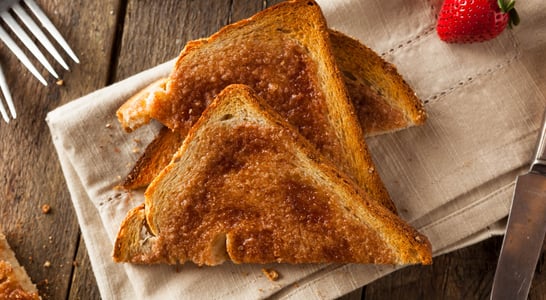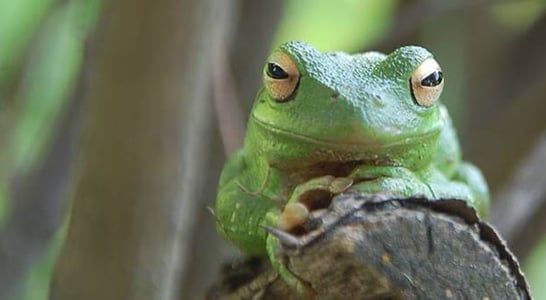
National Tell A Fairy Tale Day
Once upon a time, magical stories of princesses, knights, and talking animals filled our hearts with wonder and imagination.
Gather round the fire, and make yourselves comfortable… National Tell A Fairy Tale Day is all about exploring myths and stories, old and new. From grim(m) tales to urban legends, tap the dark corners of your subconscious and see what you find…
How to Celebrate National Tell A Fairy Tale Day
It should be clear by now that, when it comes to celebrating National Tell A Fairy Tale Day, you really can let your imagination run wild! And while it’s a day that kids will love, it’s also a great occasion for adults too.
Gather your friends and family and take it in turns to share your favorite stories with one another. Time to brush up on your acting skills, as the more dramatic enactments the better – whether you’re good at impersonating a wicked witch or excel at acting out the characters’ quest through the enchanted forest, you’ll want to really make the tale come to life for your audience. And why not sit around a bonfire toasting marshmallows or string up some fairy lights in your living room to add to the atmosphere?
Alongside sharing the stories we know and love, fairy tales are the perfect genre for getting creative and honing your writing skills. Take a well-known story and tweak it to fit a different time or setting, or have a crack at inventing your own. It may well start with ‘Once upon a time’, but it’s completely up to you whether there’s a ‘Happily ever after’! Many libraries and literary organizations will also share stories and creative resources and even hold events to help mark the occasion.
If writing’s not your thing, then there are plenty of films and programs based on fairy tales for you to enjoy. Disney’s Snow White and the Seven Dwarves, Cinderella and The Little Mermaid are just some examples of the media giant’s adaptations, while movies and TV series such as Into the Woods and Tell Me a Story interweave and retell various classic fairy tales for new audiences.
And if you feel like going all out, why not host a fairy tale themed party? Encourage your guests to come in fancy dress, put on an enchanted feast of yummy snacks such as gingerbread houses and toadstool cupcakes, and throw some legendary party games like hunt the pea and castle building.
However you choose to celebrate National Tell A Fairy Tale Day, it’s sure to be a magical occasion!
National Tell A Fairy Tale Day FAQs
What is a Fairy Tale?
Also called wonder tales, magic tales or fairy stories, Fairy Tales are a genre of fiction originating in European folklore. These tales often feature mythical creatures such as elves, dwarves, giants, fairies, gnomes, mermaids and more.[1]
Who wrote the first Fairy Tales?
The original stories were passed down orally for thousands of years so it’s impossible to tell who started them. However, some of the first Fairy Tales that were written and published were by French Authors Charles Perrault and Madame d’Aulnoy.[2]
What are the most popular Fairy Tales?
A favorite part of many childhoods, some of the most popular stories of all time include Cinderella, Beauty and the Beast, Little Red Riding Hood, Snow White and the Seven Dwarves, Jack and the Beanstalk and Sleeping Beauty.[3]
Which Fairy Tales are Grimm?
In the early 19th century, the Grimm Brothers spent time collecting stories from people of all classes in Germany. Some of their Fairy Tales include Cinderella, Snow White, Hansel and Gretel, Rapunzel, The Frog King, Rumplestiltskin and Little Red Riding Hood.[4]
When is Tell a Fairy Tale Day?
Each year on February 26, National Tell a Fairy Tale Day is the perfect time to spend time reading and making up stories with children.[5]
History of National Tell A Fairy Tale Day
The sharing of magical, otherworldly stories is a tale as old as time. While the term ‘fairy tale’ was coined in 1697 by Madame d’Aulnoy (conte de fées in her native French), it’s likely that some fairy tales originated as early as the bronze age over 6,000 years ago. And for most of history, fairy tales have been passed on not in written form but via the oral tradition, with each generation telling and dramatizing stories to the next.
The fairy tale’s ancient roots can be traced all over the world, from Vikram-Betaal in India and Aesop’s Fables in Ancient Greece to Arabian Nights in the Middle East. It was during the late 17th to 19th centuries that fairy tale collectors emerged, most famously Charles Perrault and the Brothers Grimm. While the Brothers Grimm aimed to preserve folktales in their pure form, documenting them in the way they were told by rural peasants unable to read or write, Perrault and others reworked fairy tales for literary and artistic effect, with some writers such as Hans Christian Andersen dreaming up their own new stories.
As the fairy tale’s history emerges into the modern day, it’s clear that the genre is still as popular as ever – look no further than the success of Disney movies to see how these stories continue to capture our hearts and imaginations. In fact, the famous Disney castle is inspired by Neuschwanstein Castle in Germany, built by none other than the Märchenkönig (fairy-tale king), Ludwig II of Bavaria, himself. Perched on a rocky hill and with horse-drawn carriage rides up to the front door, Neuschwanstein and its elaborate interior abound in myths and legends – the castle is even home to an artificial grotto!
By celebrating National Tell A Fairy Tale Day, you’ll be continuing the magical tradition that has ensured fairy tales are still very much part of our lives to this day.
How Fairy Tales Changed Over Time
Perhaps one of the most interesting aspects of fairy tales is how they change over time. Simple plot structures, motifs and archetypal characters recurring across many cultures make these stories rife for adaptation and reinterpretation.
Although nowadays we usually associate fairy tales with children’s literature, you may be surprised to learn that many of today’s beloved stories have rather dark and disturbing origins. Imagine a world in which no woodcutter comes to save Little Red Riding Hood from the wolf’s belly, or in which one of the ugly stepsisters cuts off her own toes so that her foot fits in the slipper!
From the 18th century onwards, many fairy tales were toned down and reworked so that they were more suitable for children.
These stories and the genre itself have also been adapted and reinvented for different time periods and cultures. Alongside original modern-day fairy tales, there are also various retellings, for example in urban settings or different countries.
One particularly common type of retelling comes from women writers. Authors such as Angela Carter and Margaret Atwood have taken what are often seen as outdated tropes about women and reinvented them – the damsel in distress becomes the plucky heroine, and the trapped bride leaves her ogre husband for her happily ever after.
Why Fairy Tales are Important
As it is often claimed Albert Einstein once said, “If you want your children to be intelligent, read them fairy tales. If you want them to be more intelligent, read them more fairy tales.” We might not expect such high praise for fairy tales from a world-famous theoretical physicist, but Einstein recognized the importance of the imagination.
Fairy tales are incredibly valuable for both children and adults when it comes to learning about the world in which we live and developing our capacity for creativity.
Fairy tales have also been considered fertile ground by psychoanalysts. With their twists and turns, age-old themes and familiar characters, our favorite stories may reveal not only the workings of our personal subconscious but also the fundamental elements of our collective psyche.
National Tell A Fairy Tale Day Timeline
3000 BC – 1200 BC
Fairy Tales get their beginning
During the Bronze Age, stories are passed down orally through Eastern and Western Indo-European languages. This includes stories such as Jack and the Beanstalk, Beauty and the Beast, as well as many others.[1]
1697
Term “Fairy Tale” is coined
French literary fiction writer, Madame d’Aulnoy publishes her own book of Fairy Tales and is the first to use the term which, in French, is conte de fées. She is one of many female fairy tale writers during this era.[2]
1697
Charles Perrault publishes his first book
This French author publishes a story collection that not only includes Little Red Riding Hood, but the grouping is subtitled as “Tales of Mother Goose”.[3]
Early 19th Century
Brothers Grimm popularize Fairy Tales
Jacob and Wilhelm Grimm are German academics who collect stories from German folklore and retell them. Many of these stories are similar to those of French storyteller, Charles Perrault, from a century prior.[4]
1837
Hans Christian Andersen publishes The Little Mermaid
Included in the first collection of Fairy Tales Told for Children, which is published in Copenhagen, The Little Mermaid is probably one of the most popular of Anderson’s tales.[5]
Also on ...
View all holidaysNational Chili Day
A hearty meal full of beans and savory meat, topped off with sour cream, cheese, and diced onions — warm, spicy comfort.
National Pistachio Day
A nutritional powerhouse, these little green treats can improve your heart health and reduce inflammation.
National Toast Day
A crispy slice of goodness, lightly toasted to perfection. Topped with a delicious spread, it's a perfect start to the day!
Levi Strauss Day
In the hustle of Gold Rush, this sharp-minded innovator stitched together a sturdy solution for prospectors' fashion woes, forever altering attire.
We think you may also like...
Humbug Day
Have a good old grumble to destress and channel your inner scrooge by reading a Dickens novel or donning a top hat and cane.
Independent Bookstore Day
Independent bookstores are struggling more and more with competition like Amazon or big chains like Barnes & Noble, so make a point to support your local shop.
National Frog Jumping Day
Discover Mark Twain’s bizarre and originally unpublished tale of jumping frogs, “The celebrated jumping frog of Calaveras County, and other sketches”.
Reading Is Funny Day
By reading books of riddles, jokes, and comedy, help kids see how reading can be just as fun and funny (if not moreso) as video games, tv, or the internet.








